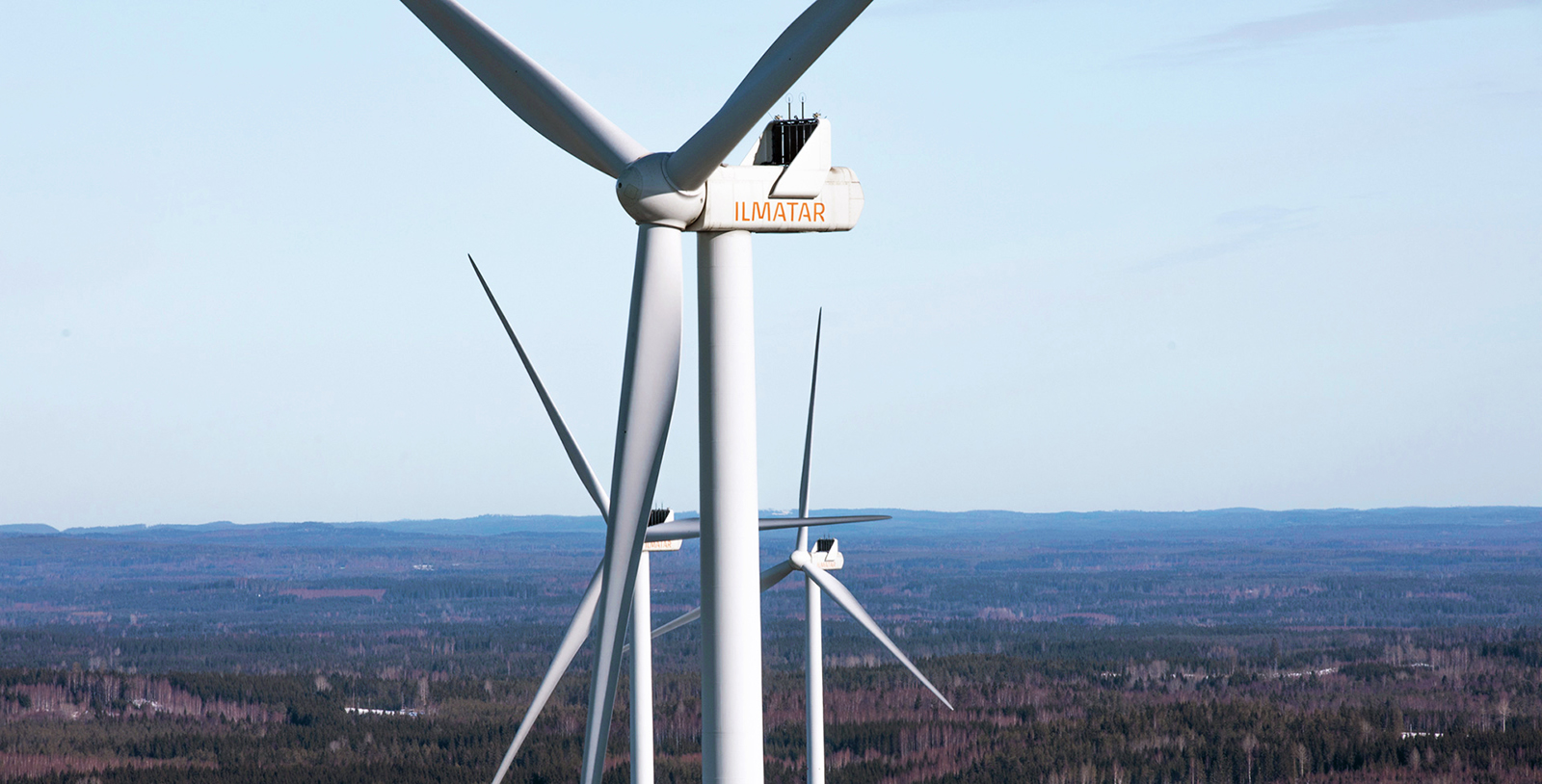The annual output of the wind farm, which has been built with turbines from Vestas, a Danish manufacturer, will be approximately 700 gigawatt-hours.
“When this output is compared with the total electricity generation figures in Finland for 2019, the Piiparinmäki wind farm in Pyhäntä will generate 11.3 per cent more wind power compared with the previous year’s figures,” says Juha Sarsama, CEO at Ilmatar Windpower Oyj.
Long-term Power Purchase Agreements (PPAs) contribute to the construction of wind farms on market terms and have established a stronger foothold in Finland. They ensure that the price for electricity generated by wind farms can be known long into the future.
Piiparinmäki also has a PPA, which Ilmatar Piiparinmäki Oy negotiated with server operator Google before construction began. Google will use 60 per cent of the electricity generated by the wind farm to power its data centre in Hamina. The duration of the agreement has not been made public, nor has the total cost of the wind farm.
Venture capitalists have entered the wind power market
Venture capitalists are also taking on a greater role as owners of completed wind farms.
CPC Finland Ltd initiated the construction of Finland’s first wind farm built on market terms a couple of years ago with a project in Lakiakangas in Isojoki, and it sold the wind farm off last spring to Europe’s largest private equity company, Ardian in France.
The Piiparinmäki wind farm is being built as a turnkey project for Glennmont Partners, a fund management company. The latest company to get involved is the Japanese company Kansai Electric Power Company, which recently acquired a 15-per-cent stake in the Piiparinmäki project from Glennmont.
 The wind farm is being built on land owned by Metsähallitus and rented by Ilmatar. Ilmatar also acquired construction permits from Metsähallitus, which was also responsible for the preliminary design of the wind farm and the wind measurements.
The wind farm is being built on land owned by Metsähallitus and rented by Ilmatar. Ilmatar also acquired construction permits from Metsähallitus, which was also responsible for the preliminary design of the wind farm and the wind measurements.
Ilmatar’s wind farms also generate electricity for households.
“We aim to provide consumers with the option of making choices that can have a positive effect on climate change. We also see consumers as a certain type of PPA, as they help to enable the construction of new wind power in Finland,” Sarsama says.
Generation costs on the decrease, along with investment costs
The crucial factor in the acceleration in wind farm construction is the decreasing costs of electricity generation. Turbine technology is also advancing constantly.
Juha Sarsama says that PPAs are a prerequisite for the construction of wind power on market terms, as well as the improvements in investment costs that have already occurred.
“Investors have reduced their expected yields and interest rates have remained low, and these factors have increased the rate of investment in wind power.”
Piiparinmäki, on the border between Kainuu and North Ostrobothnia will be completed in two parts. The first part will be completed in the end of the year and the final part of the wind farm will be finished in the autumn of next year.






